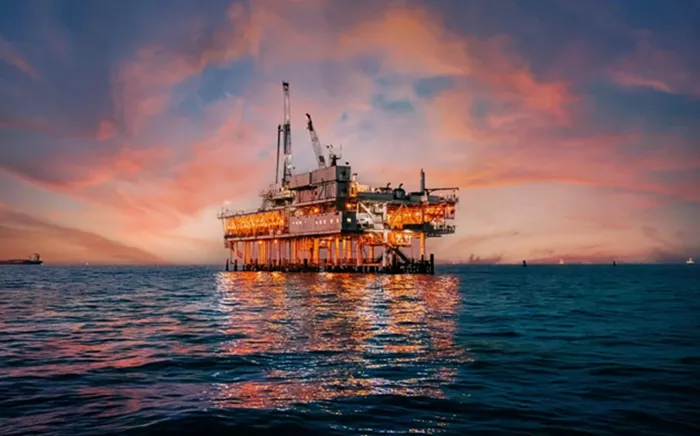Crude oil is a crucial energy resource that powers the global economy, fuels transportation, and serves as a raw material for countless products. The question of how much crude oil remains on the planet is complex and involves understanding reserves, production rates, and future demand. This detailed article explores the current estimates of crude oil reserves, the methodologies used to determine these reserves, and the implications for energy security and environmental sustainability.
Understanding Crude Oil Reserves
1. Definitions and Concepts
Proven Reserves: These are quantities of crude oil that geological and engineering data suggest can be recovered under existing economic and operational conditions. Proven reserves are classified into three categories: proven developed, proven undeveloped, and probable reserves.
Undiscovered Resources: These are quantities of crude oil that are estimated to exist but have not yet been discovered. These estimates are based on geological surveys and projections.
Recoverable Resources: This term refers to the total amount of oil that can be extracted from known reserves, considering current technology and economic conditions.
2. Measuring Techniques
Estimating crude oil reserves involves a combination of geological surveys, exploration data, and advanced technologies. Key methods include:
Seismic Surveys: These use sound waves to map underground formations and estimate the presence of oil reserves.
Exploration Drilling: Boreholes are drilled to collect samples and confirm the presence of oil, providing more accurate reserve estimates.
Reservoir Modeling: This involves creating detailed models of oil reservoirs to predict their capacity and extraction potential.
See also: Where Is Sweet Crude Oil Found?
Current Estimates of Crude Oil Reserves
1. Global Reserves
As of 2024, global proven crude oil reserves are estimated to be approximately 1.7 trillion barrels. This figure is subject to change based on new discoveries, technological advancements, and revisions of existing estimates. The distribution of these reserves is uneven, with significant quantities located in specific regions:
Middle East: The Middle East holds the largest share of proven crude oil reserves, accounting for roughly 48% of the global total. Major countries include Saudi Arabia, Iraq, and Iran.
North America: North America, particularly the United States and Canada, has substantial reserves. The U.S. has significant reserves in the Permian Basin and other shale formations, while Canada’s oil sands contribute a considerable portion.
South America: Venezuela has some of the largest proven reserves in the world, particularly in the Orinoco Belt.
Africa: African countries like Libya, Nigeria, and Angola also possess significant crude oil reserves.
2. Regional Analysis
Saudi Arabia: Saudi Arabia has the largest single share of global proven reserves, estimated at around 266 billion barrels. The country continues to be a major player in global oil production and supply.
Venezuela: Venezuela’s proven reserves are estimated at about 300 billion barrels, primarily in the Orinoco Oil Belt. However, political and economic challenges have impacted extraction and production.
United States: The U.S. has proven reserves of approximately 50 billion barrels, with substantial contributions from shale oil production.
Factors Affecting Oil Reserves
1. Technological Advances
Technological innovations have significantly impacted the estimation and extraction of crude oil. Techniques such as hydraulic fracturing (fracking) and horizontal drilling have unlocked previously inaccessible reserves, particularly in shale formations.
2. Economic Conditions
The economic viability of extracting crude oil depends on market prices and production costs. Fluctuations in oil prices can affect the feasibility of developing new reserves and maintaining current production levels.
3. Environmental and Regulatory Factors
Environmental regulations and policies impact oil extraction and production. Increasing emphasis on environmental sustainability and carbon reduction can influence the development of new reserves and the future of fossil fuel consumption.
4. Geopolitical Factors
Political stability and geopolitical dynamics play a significant role in the exploration and production of crude oil. Conflicts, trade policies, and international agreements can affect access to reserves and influence global oil markets.
See also: How Many Gallons of Crude Oil Can the Typical, Contemporary Tanker Railcar Hold?
Future Outlook and Implications
1. Declining Production and Consumption Trends
As global consumption of crude oil continues to rise, the rate of production and the extraction of existing reserves become critical. Over time, easily accessible reserves may be depleted, and more challenging extraction processes will need to be employed.
2. Shift Towards Renewable Energy
The global shift towards renewable energy sources and efforts to combat climate change impact the future of crude oil demand. Advances in solar, wind, and other renewable technologies are expected to reduce dependence on fossil fuels and influence oil consumption patterns.
3. Potential for New Discoveries
Ongoing exploration and technological advancements may lead to the discovery of new oil reserves. While current estimates provide a snapshot of known reserves, future discoveries could alter the global oil landscape.
4. Environmental and Sustainability Considerations
The environmental impact of oil extraction and consumption is a significant concern. Efforts to reduce greenhouse gas emissions and promote sustainable practices will shape the future of crude oil use and exploration.
Conclusion
The question of how much crude oil remains on the planet is multifaceted, involving complex estimates of proven reserves, undiscovered resources, and technological and economic factors. As of 2024, global proven crude oil reserves are estimated at around 1.7 trillion barrels, with substantial quantities located in the Middle East, North America, South America, and Africa. The future of crude oil reserves is influenced by technological advancements, economic conditions, environmental regulations, and geopolitical factors. The transition to renewable energy sources and the drive for sustainability will impact the demand for crude oil and shape the future of the industry. While current estimates provide valuable insights, ongoing exploration, technological developments, and shifts in energy policies will continue to influence the global oil landscape.
Related Topics:

